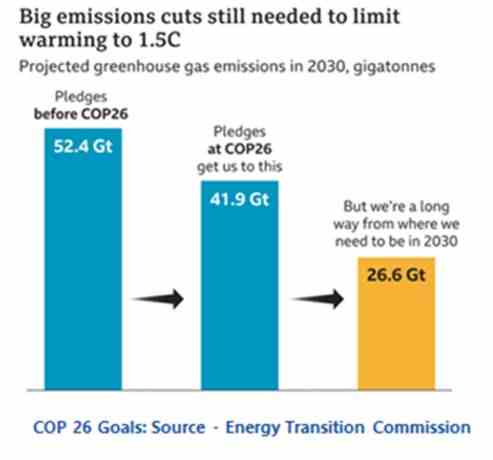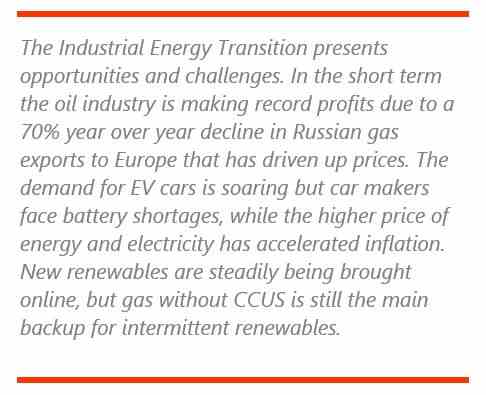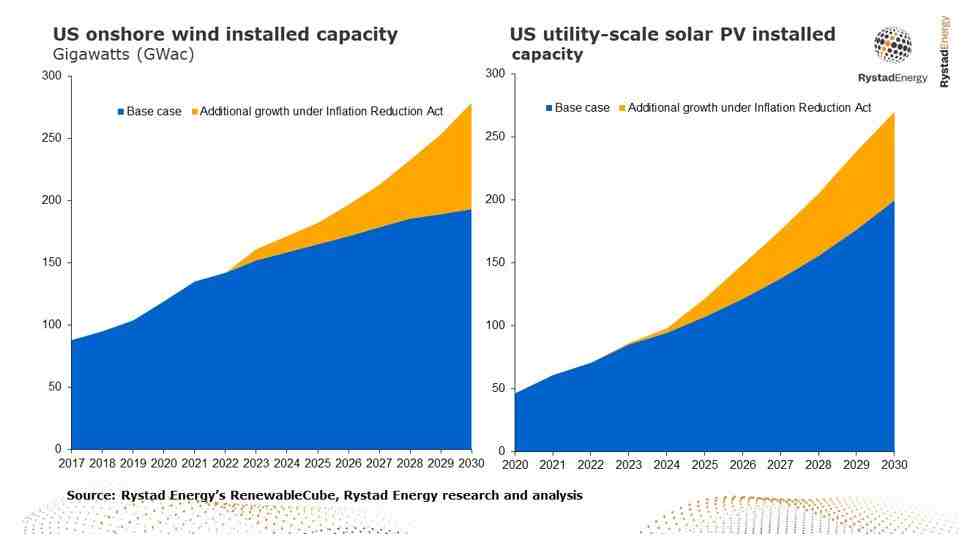

Why the Industrial Energy Transition is so difficult
The COP 27 world climate conference is coming soon in November this year and there is a lot of pressure to make new  climate pledges as more people have become aware of just how serious our current situation has become.
climate pledges as more people have become aware of just how serious our current situation has become.
Some people may be concerned that we have seen a year of highly unusual weather with record high temperatures, fires, and droughts and flooding, and so far, our climate has only warmed about 1.2 DegC above preindustrial levels. Scientists and engineers point out that we have burned in the irreversible outcome of at least 1.5 DegC by 2050. From a control system perspective, the manipulated variables have been moved too slowly to regulate our planets temperature. Even if all human CO2 emissions completely stopped tomorrow as a step change, the worlds air and ocean temperatures would continue to rise as the time constant for atmospheric CO2 to return to the equilibrium values we had during the preindustrial age are on the order of 100 years. The predictions for our world reaching 1.5 or 2.0 degrees of warming by 2050 are based on achieving the pledges we made and somehow figuring out how to remove CO2 from the air. If we just did nothing, the world would on a path that would result in roughly 6 DegC of warming. Rather than looking at last years weather we need to clearly look at where we are going and take actions that will be effective. The path we are on now should frighten you. Government pledges will require new policies  that will be difficult technically, economically, and politically. When governments commit to emissions reductions, they don’t have all the policies to achieve these fully developed. This makes it hard to understand how these new policies will impact various industries.
that will be difficult technically, economically, and politically. When governments commit to emissions reductions, they don’t have all the policies to achieve these fully developed. This makes it hard to understand how these new policies will impact various industries.
In August this year, the journal Nature issued a report that shows each additional ton of carbon dioxide that cars, power plants and other sources add to the atmosphere costs society $185. The damages from crop failures, droughts, fires, air quality, weather extremes, and loss of ecosystems all contribute to the cost.
You might think that if CO2 is costing our society $185 per ton the obvious answer would be to simply put an equal or even higher price on carbon to discourage its use. A price on carbon is widely acknowledged to be the simplest fairest and most effective policy, but so far, the US has resisted this at the federal level.
The work of early climate researchers was directly attacked, and attempts were made to create doubt, as the implication of their work suggested reducing CO2 which threatened the business interests of many industries. This has slowed the widespread realization of our situation. Meanwhile there have been extensive new and better research done that has provided much more detailed and more useful analysis and accurate model predictions to see the predicament we are all in. At the same time new research and industrial innovation has developed technology that can eventually get us to the net zero sustainable world that we desire. The problem is we need to move very fast. In the US we do have many states making policies that effectively put a price on carbon, such as policies on electric power portfolios, and with the new inflation recovery act (IRA), we have a federal policy that includes numerous investments in climate protection, including tax credits for households to offset energy costs, investments in clean energy production and tax credits aimed at reducing carbon emissions. The IRA is a moderate step in the right direction.
The path to a net zero and sustainable world will need these changes:
In late June, the Supreme Court issued a ruling stating that the Environmental Protection Agency cannot put state-level caps on carbon emissions under the 1970 Clean Air Act. Such authority would, in effect, steer states away from coal and toward other types of power sources that emit less carbon. This policy is mostly viewed as a setback, but it has energized lawmakers to create new laws that will better enable the EPA.
Exactly how governments can make the shift is a complex issue According to the Norwegian Energy Analyst Rystadenergy the recent US IRA act is the kind of policy that will begin to make a dent in the problem. The charts below show the projected incremental renewable investments that will be made as a result of the IRA policy.

The most efficient and effective government policy to deal with a pollutant like methane or CO2 is to directly limit it’s release by putting a sufficient penalty on their release. While specific industries will be impacted more than others, we now realize these industries must change for the common good. In a recent interview with Darren Woods the CEO of ExxonMobil Darren mentions that carbon capture is easiest when the concentration is highest, but they need over $100/ton price on carbon to start building at scale. Darren is waiting for a price on carbon before they invest. This is the interview of Darren Woods: https://www.youtube.com/watch?v=gTZK94-5yjU.
Although it is less efficient, the path forward is to subsidize the low CO2 alternatives and the US IRA act does exactly that. There are indications that it can be effective, but there are also concerns that it is not efficient and favors particular technologies, companies, and geographic locations. It is no wonder that some companies will succeed, and some will fail when it is so hard to plan and predict the incentives. Perhaps the real reason that industry has been slow to adapt to the energy transition is that few people or businesses have planned for issues that have the longer time constants. Five years is considered a long-term plan. The department of defense and the Pentagon however are much better at long term planning and the issues of military readiness, population migration, and general world stability require them to model and understand how our environment is changing. https://www.whitehouse.gov/briefing-room/statements-releases/2021/10/21/fact-sheet-prioritizing-climate-in-foreign-policy-and-national-security/.
At ARC we have written about the value and importance of digital twins. Everyone should understand our climate future and there are no shortages of digital twin models of planet earth. Seeing our future visually will help us plan and get to where we need to be sooner. Making the long-term view a part of your plans will help all businesses survive, including yours.

